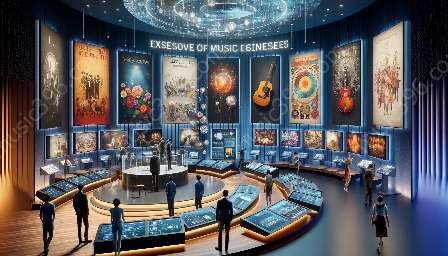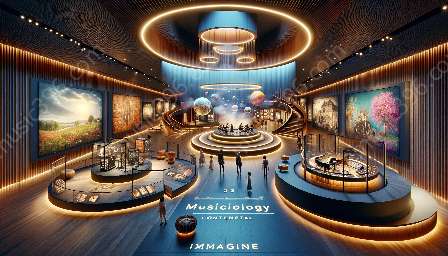In the ever-evolving landscape of music, the digital age has brought about significant changes in how music is created, distributed, and received. This transformation has also had a profound impact on the field of musicology, prompting scholars to explore the semiotics of music in the digital age. Understanding the intersection of music semiotics and the digital era is crucial for comprehending how our perception of music has been influenced.
Influence of Technology on Music Semiotics
With the advent of digital technology, the way music is produced and consumed has undergone a revolutionary shift. This has not only transformed the sonic qualities of music but has also altered the very fabric of music interpretation and meaning. The use of digital tools and platforms has given rise to new forms of musical expression, blurring the boundaries between traditional genres and creating an amalgamation of diverse influences.
This shift in the sonic landscape has prompted musicologists to delve deeper into the semiotic analysis of music in the digital age. Semiotics, the study of signs and symbols and their interpretation, provides a framework for understanding how music communicates meaning and emotions. In the digital age, these signs and symbols take on new forms, from digital interfaces to interactive visuals accompanying music, and have changed how music is perceived and understood by audiences.
Music Semiotics and Cultural Significance in the Digital Era
Music has always held a significant place in culture, serving as a medium through which societal values, beliefs, and emotions are expressed. In the digital age, music semiotics plays a crucial role in reflecting and shaping cultural norms and identities. The accessibility and widespread reach of digital music have allowed for the globalization of musical influences, leading to the fusion of diverse cultural elements in music.
Within this context, semiotic analysis helps in deciphering the cultural significance embedded in digital music. It enables scholars to explore how digital music communicates cultural narratives, social commentary, and identity politics. From analyzing the use of symbols and motifs in music videos to decoding the intricate layers of meaning in digital compositions, music semiotics in the digital age opens doors to understanding the interplay between music, culture, and technology.
Impact on Musicology and Interpretive Practices
The digital age has not only reshaped the production and consumption of music but has also affected how musicologists approach the study of music. Music semiotics, when applied to the digital context, offers new perspectives on interpretive practices and the analysis of musical texts. Digital music is not limited to audio content; it encompasses multimedia experiences that include visual, interactive, and participatory elements.
This expanded scope of digital music poses challenges and opportunities for musicologists as they navigate through the semiotic layers of modern musical expressions. Understanding the intertextuality of digital music, the interplay between sound and visuals, and the integration of interactive elements into musical experiences requires a nuanced approach to musicological inquiry. It calls for a reevaluation of traditional methodologies and the adoption of interdisciplinary approaches that incorporate semiotics, technology, and cultural studies.
Future Directions and Challenges
As the digital age continues to shape the landscape of music, the study of music semiotics will inevitably evolve to meet the demands of this dynamic era. Future research in musicology and music semiotics is likely to focus on the exploration of emerging digital platforms, virtual reality environments, and artificial intelligence in relation to music creation and interpretation.
Challenges also lie ahead in reconciling the rapid developments in technology with the preservation of traditional musical forms and cultural heritage. The tension between innovation and preservation raises questions about how music semiotics can adapt to accommodate the diversity and dynamism of the digital music landscape while preserving the rich tapestry of musical traditions.
Conclusion
Exploring the semiotics of music in the digital age offers a multifaceted understanding of how music, culture, and technology converge to shape contemporary musical experiences. By unraveling the semiotic codes embedded in digital music, musicologists can gain insight into the complexities of meaning-making in a digitally mediated world. As the digital age continues to influence the production, dissemination, and reception of music, the study of music semiotics will remain at the forefront of uncovering the intricate layers of significance embedded in the sounds, visuals, and interactive elements of digital music.



















